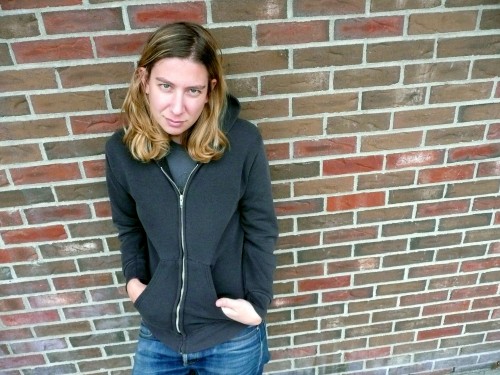

I was fascinated by how that shifted people’s sense of identities. I was really interested in this phenomenon from my early 20s where a lot of my friends who were lesbian-identified were transitioning into men - and a lot of my friends who were lesbian-identified were dating trans men.

To start with the obvious, where did the idea to have a 17-year-old cis straight boy pretend to be a trans man come from? The Cut spoke with Schrag about YA morals, mortifying narrators, and making fun of her former self. “On TV and in YA novels, there’s often this sort of preciousness around queer characters,” Schrag told the Cut.

Schrag - who’s best known for her graphic memoirs about her Berkeley High School years ( Awkward and Definition, Potential, and Likewise), as well as her stint as a writer for The L Word - moved to New York in 1998, when she was 18, and the characters in Adam reflect some of the self-righteousness and misogyny she observed among her young lesbian and trans friends. The resulting book is both mortifying and hugely entertaining, not to mention hilariously graphic (imagine a straight teenager losing his virginity with a strap-on, carefully camouflaging his dick with a tightly wound ACE bandage) - but it’s also a nuanced representation of the New York LGBT scene in the mid-2000s. Ariel Schrag’s new novel, Adam, is every bit as juicy as the plot synopsis suggests: An awkward, insecure 17-year-old straight boy visits his cool lesbian older sister in New York for the summer, goes to a gay club, discovers he passes as a trans man, seduces the (lesbian) girl of his dreams - and continues to lie to her about his age, identity, and anatomy for the rest of the summer.


 0 kommentar(er)
0 kommentar(er)
